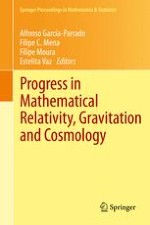This book contains contributions from the Spanish Relativity Meeting, ERE 2012, held in Guimarães, Portugal, September 2012. It features more than 70 papers on a range of topics in general relativity and gravitation, from mathematical cosmology, numerical relativity and black holes to string theory and quantum gravity.
Under the title "Progress in Mathematical Relativity, Gravitation and Cosmology," ERE 2012 was attended by an exceptional international list of over a hundred participants from the five continents and over forty countries. ERE is organized every year by one of the Spanish or Portuguese groups working in this area and is supported by the Spanish Society of Gravitation and Relativity (SEGRE).
This book will be of interest to researchers in mathematics and physics.
